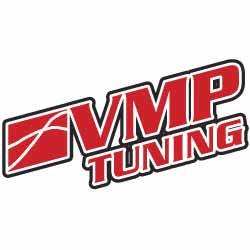Injectors. Gasoline ratings on a boosted setup. Most commonly used injector sizes.
I highly recommend reading this link if you want to learn more about selecting injectors.
http://www.fordracingparts.com/download/charts/Fuel_Injectors_and_Adaptors.pdf
Ford/Bosch 24lb. Newer design, available in ev6 body/internal design with uscar connector. Excellent spray pattern for 2v/3v/4v heads. Great control/mileage. Original equipment on the 3v.
Ford/Bosch 39lb. 20+ year old ev1 body/internal design injector which can be found with either jetronic or uscar connector. Subpar pulse angle and control by todays standard. Cheap entry level injectors with fair control/mileage. 450-475rwp rated. Don't even recommend using them on a 3v personally or at all for the matter. A lot of imitation versions of these out there as well.
Ford/Bosch 47lb. Newer design, available in ev6 or ev14 body/internal design with uscar connector. Excellent spray pattern for 2v/3v/4v heads. Great control/mileage. 550-600rwhp rated. Excellent injector choice for a stock block boosted setup.
Ford/Bosch 55lb (580cc). New design, available in ev14 uscar connector. OE on the 2013 GT500. Requires height spacers for GT use. Excellent spray pattern for 2v/3v/4v heads. Great control/mileage. 675rwhp rated.
Ford/Siemens Deka 60lb (630cc). 15+ year old design available in ev6 body with uscar connector. Fair spray pattern/mileage and good control. 650-700rwhp rated. Common/good choice still used widely today.
Bosch 65lb (650cc). Newer design, available in ev6 or ev14 body/internal design with uscar connector. Excellent spray pattern for 2v/3v/4v heads. Great control/mileage. 700rwhp rated. Less commonly used injector due to higher price over the SD 60lb.
Bosch/ID/DW 750cc. Newer design, cary over from ls/gm world. Available in ev14 compact( 39mm ls) or ev6/ev14 body/internal design with uscar connector. Excellent spray pattern for 2v/3v/4v heads. Great control/mileage. 800rwhp rated. Less commonly used injector due to higher price point.
Ford/Siemens Deka 80lb (875cc). 15+ year old design available in ev6 body with uscar connector. Fair spray pattern/mileage and poor control at low pulse widths requires more fines to tune. 900rwhp rated. Common choice still used today due to cheaper price point compared to other injectors in this size range. I do not personally recommend them.
Bosch/ID/DW 95lb (1000cc). Newer design, available in ev6 or ev14 body/internal design with uscar connector. DW1000's are for the 2016 Cobrajet. Excellent spray pattern for 2v/3v/4v heads. Available in 4 hole or single ball orifice tip. Excellent control/mileage (single ball orifice tip being optimal). 1000rwhp rated (850rwhp e85). Excellent injector choice for any built motor application up to this power rating.
Bosch 127lb/ID1300 (1330cc). Newer design, carry over from BMW world design. Available in ev6/ev14 body/internal design with uscar connector. Excellent spray pattern for 2v/3v/4v heads. Great control/mileage. 1200rwhp rated (1000rwhp e85). Less commonly used injector due to greatly higher price point over the 1000cc. Common choice for E85 use due to all stainless steel internals.
Bosch 160lb/ID1700 (1700cc). Modern design, available in ev1,ev6 or ev14 body/internal design with uscar or jetronic connector. Excellent spray pattern for 2v/3v/4v heads. Excellent control/mileage in e85 (fair with gasoline) 1800rwhp rated (1200rwhp e85). Not to commonly used due to similar pricing as the 2000cc.
Bosch 210lb/ID2000 (2225cc). The biggest bitch on the block. Carry over from the import world. Available only in ev14 compact and denso connector so spacers and plug adaptors required for ford application. Good control/mileage in e85, fair to poor in gas. 2000rwhp+ rated (1600rwhp+ in e85). Controlable up to 100psi base pressure (3350cc). 3700cc max flow rating at 130psi base pressure. $$$$$$$$



